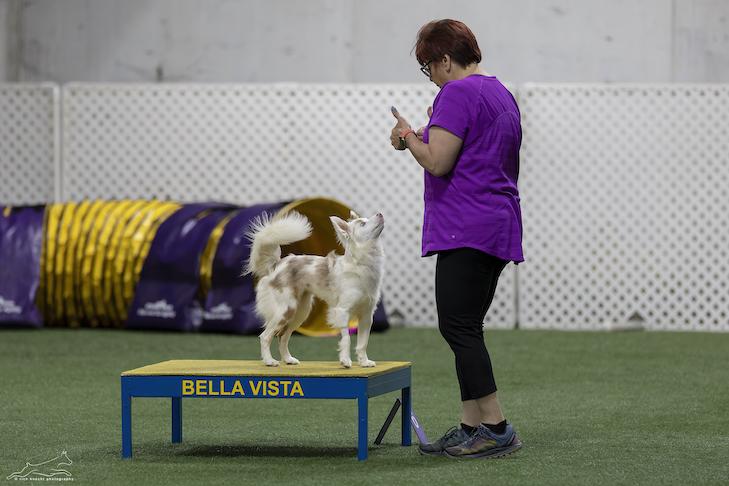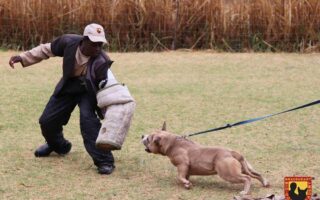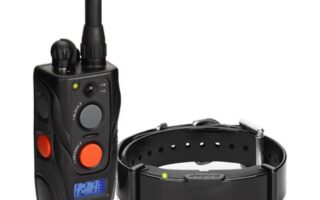Title: “Beyond Barking: A Guide to Training Your Deaf Dog”
Introduction:
In a world resonating with sound, the silence of a deaf dog can seem like an insurmountable barrier to communication. Yet, within that quiet lies a unique opportunity for connection and understanding. Training a deaf dog may appear daunting at first, but it opens the door to a new language—one that transcends sound and embraces the visual and tactile. Just as our furry companions rely on our voice to convey love and instruction, they also decouple from the traditional cues to develop an extraordinary bond with their humans. This article aims to illuminate the essential techniques and strategies for navigating the rewarding, albeit different, path of deaf dog training. Whether you’re a seasoned pet owner or a first-time adopter, you’ll discover how to cultivate an enriching relationship with your silent companion, transforming perceived limitations into avenues for creativity, trust, and joy.
Table of Contents
- Understanding the Unique Needs of Deaf Dogs in Training
- Effective Communication Techniques for Hearing Impaired Canines
- Creating a Structured Training Routine for Deaf Dogs
- Building a Strong Bond Through Positive Reinforcement Strategies
- Q&A
- To Conclude
Understanding the Unique Needs of Deaf Dogs in Training
Training a deaf dog requires a unique approach, focusing on visual cues and positive reinforcement techniques. Unlike hearing dogs that rely on audio commands, deaf dogs respond better to hand signals, body language, and even light signals. Understanding that their primary mode of communication is visual allows trainers to implement strategies that resonate with these pups. Here are some important considerations:
- Consistency is key: Use the same hand signals for commands to avoid confusion.
- Socialization: Regular interactions with other dogs and people enhance their learning.
- Positive reinforcement: Employ rewards such as treats or praise to encourage desired behavior.
- Environmental signals: Use vibrations or visual signals, like flashing lights, as alerts.
Creating a structured training environment can further benefit deaf dogs. Many owners find success using visual aids like training clickers with a light or utilizing colored flags for outdoor training. Establishing a routine not only helps dogs understand what’s expected of them but also builds their confidence in navigating their world. Below is a simple table outlining common commands and their corresponding visual cues:
| Command | Visual Cue |
| Sit | Hand raised upwards |
| Stay | Open palm facing out |
| Come | Waving hand or arm |
| Lie Down | Hand moving downwards |
Effective Communication Techniques for Hearing Impaired Canines
Communicating with hearing-impaired dogs requires a blend of patience and creativity. Visual signals play a pivotal role in this process. You can employ techniques that incorporate hand signals, facial expressions, and body language to convey commands. For instance, teaching your dog to respond to a raised hand for “sit” or a sweeping gesture for “come” can facilitate an effective communication dynamic. Associates gestures with positive reinforcement, such as treats or praise, helps create a desirable response, solidifying the connection between the visual cue and the desired action.
Another innovative approach involves the use of vibration collars or light signals. These devices can be particularly useful in outdoor environments where visual contact may be more challenging. A vibrating collar can be programmed to vibrate at the touch of a button, signaling to your dog that it should pay attention to you. Similarly, using a flashlight or a laser pointer can direct your dog’s focus during training sessions, especially in low-light conditions. Adapting your training environment to include these methods ensures that your canine companion understands and responds effectively to your guidance, enhancing their training experience.
Creating a Structured Training Routine for Deaf Dogs
Establishing a training routine for a deaf dog requires a thoughtful approach that leverages their other senses, primarily sight and touch. Begin by creating a consistent schedule, which helps the dog anticipate training sessions. Use visual signals such as hand signals or flashlights, and incorporate tactile cues such as gentle taps on the body to get their attention. Remember to keep training sessions short but engaging; dogs have varying attention spans, and frequent, brief exercises help maintain their focus.
In addition to utilizing visual cues, consider adding elements that stimulate your dog’s mind and body. Incorporate positive reinforcement such as treats or playtime to reward desired behaviors. A structured routine may include a mix of activities; for example:
- Basic commands (sit, stay, come) with hand signals
- Agility training to enhance coordination
- Interactive games that involve problem-solving
Establishing a predictable environment with clear rules will also help your dog feel secure and understand expectations. Through patience and consistency, your deaf dog can thrive in a structured training routine that is both effective and enriching.
Building a Strong Bond Through Positive Reinforcement Strategies
When training a deaf dog, establishing communication through positive reinforcement is crucial. By implementing consistent rewards for desired behaviors, you can strengthen your bond and create a trusting relationship. Here are some effective strategies to consider:
- Hand Signals: Develop a unique set of hand commands that your dog can easily recognize. Use clear and exaggerated gestures, ensuring your dog can see them from a distance.
- Clicker Training: Utilize a clicker as a sound marker, which can be paired with visual cues. When your dog performs a desired action, a click followed by a treat reinforces that behavior.
- Rewards: Always keep treats or toys on hand to reward good behavior immediately. This can be physical affection, like belly rubs, or using their favorite toy for extra motivation.
Building a routine that incorporates these strategies not only aids in effective training but also enriches the overall experience for both you and your dog. To showcase your progression, consider maintaining a training chart. This not only serves as a motivational tool but also allows you to track progress over time:
| Week | Commands Learned | Reinforcement Used |
|---|---|---|
| 1 | Sit, Stay | High-value treats |
| 2 | Come, Down | Playtime rewards |
| 3 | Shake, Roll Over | Clicker and treat |
Q&A
Q&A: Navigating the World of Deaf Dog Training
Q: Can deaf dogs really learn commands like hearing dogs?
A: Absolutely! Deaf dogs can learn commands through visual cues, touch, and even vibrations. With consistent training using hand signals or flashlights, they can become well-trained, obedient companions just like their hearing counterparts.
Q: What’s the most effective way to communicate with a deaf dog?
A: Communication with a deaf dog primarily revolves around visual signals. You can use signed commands, body language, or even props like colorful flags. Moreover, incorporating positive reinforcement, such as treats or playtime, can make training both effective and enjoyable.
Q: Is it necessary to start training a deaf dog from an early age?
A: While training a deaf dog can begin at any age, starting early is beneficial, especially when it comes to establishing routine and trust. However, older dogs can also learn new tricks—it’s all about patience, consistency, and positive reinforcement.
Q: How do I house-train a deaf dog?
A: House-training a deaf dog follows similar principles to that of hearing dogs, but with a focus on visual cues. You can establish a consistent routine, use a designated spot for bathroom breaks, and reward them when they go outside. Remember to pay attention to their body language for signs they need to go out.
Q: Can I use a clicker for training a deaf dog?
A: Yes, a clicker can be an effective tool! Since deaf dogs rely on visual stimuli, you can use a vibrating clicker or a flashlight as a cue to signal the desired behavior. This helps associate the “click” with rewards, enabling quicker learning.
Q: Are there specific challenges I should be aware of when training a deaf dog?
A: Training a deaf dog can come with unique challenges, such as keeping their focus in distracting environments. Additionally, you must ensure that your dog feels safe and is aware of your presence since they might startle easily. Building a solid trust foundation will help mitigate some of these challenges.
Q: How important is socialization for deaf dogs?
A: Socialization is crucial for all dogs, including those who are deaf. Exposing your dog to various environments, people, and other animals will help them gain confidence and learn appropriate behaviors. Just be mindful of their unique communication needs during social interactions.
Q: Are there any tips for working with a deaf dog in public spaces?
A: When taking a deaf dog into public spaces, always keep them on a leash and maintain a close eye on their surroundings. Use a harness if your dog is prone to pulling. Establish a reliable recall using visual cues and ensure they can see you at all times to prevent any mishaps.
Q: Where can I find resources or support for training my deaf dog?
A: Numerous resources are available online, including websites and forums dedicated to deaf dog training. Additionally, consider seeking out local trainers who have experience working with deaf dogs. There are also organizations that focus specifically on the needs of hearing-impaired pets.
Q: What’s the most rewarding part of training a deaf dog?
A: The most rewarding aspect of training a deaf dog is witnessing their unique learning process and forming a deep bond based on trust and mutual understanding. Many owners say that the connection they build with their deaf dog is steadfast, often resulting in a profoundly fulfilling companionship.
To Conclude
As we conclude our exploration of deaf dog training, it becomes clear that communication knows no boundaries, especially when it comes to the bond between humans and their canine companions. By employing innovative techniques and a sprinkle of creativity, we can transcend the limitations of sound to forge deep, meaningful connections with our four-legged friends.
Remember, patience is key; every pup is unique, and their journey will unfold at its own pace. Whether through hand signals, vibrations, or the power of touch, the tools for success are at your fingertips. Embrace the adventure and celebrate the milestones, no matter how small.
In this journey, you are not just a trainer; you are an advocate, a teacher, and a loving friend. As you and your deaf dog navigate the world together, may your hearts be open to learning, understanding, and the immeasurable joy that accompanies true companionship. So go forth, with hands ready to signal love and hearts eager to connect, knowing that the path you walk together is a testament to resilience and compassion. Happy training!



